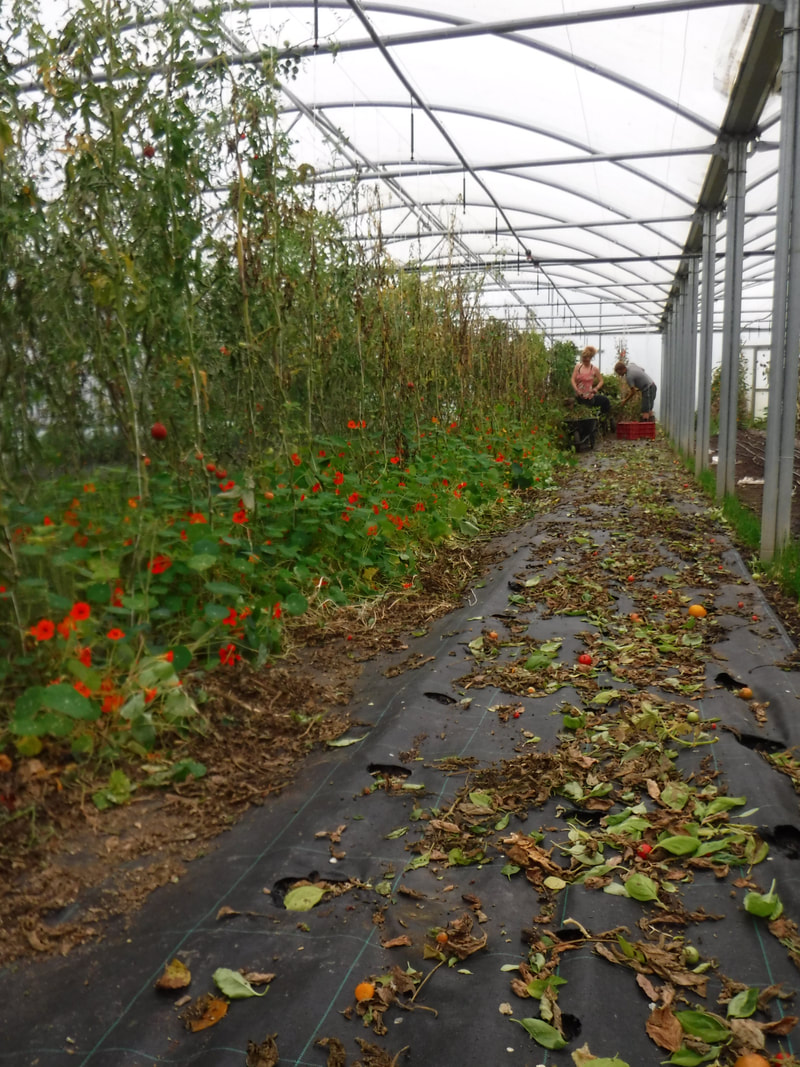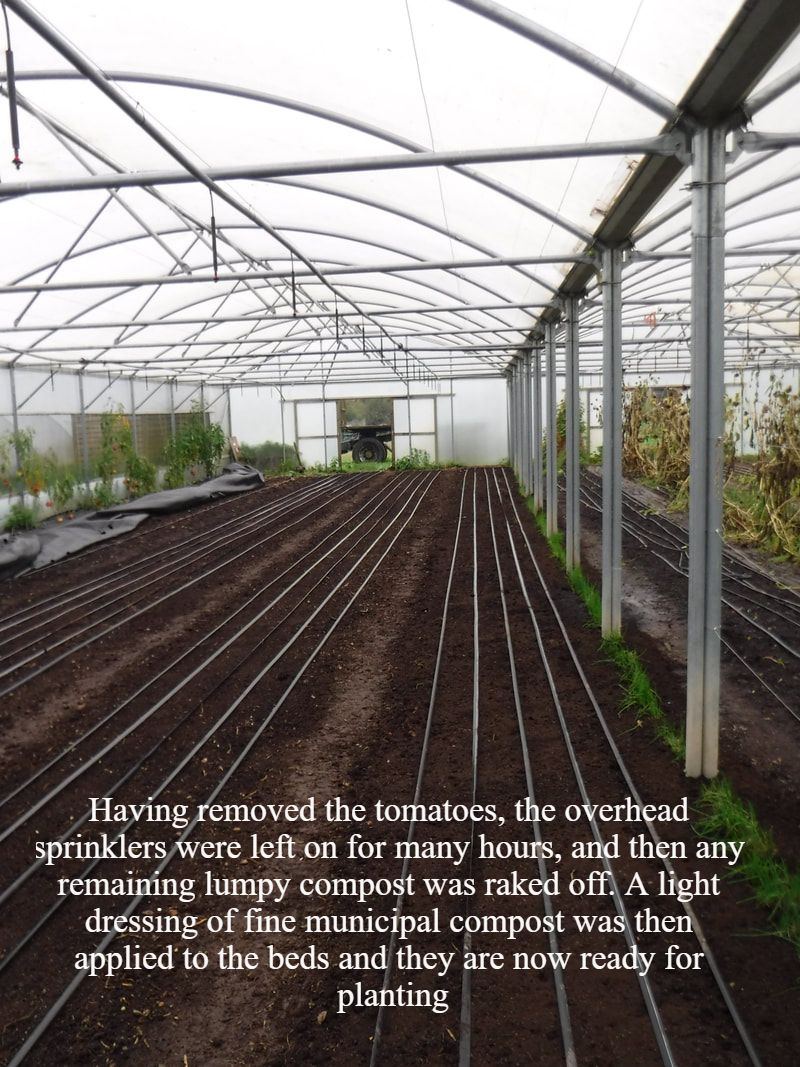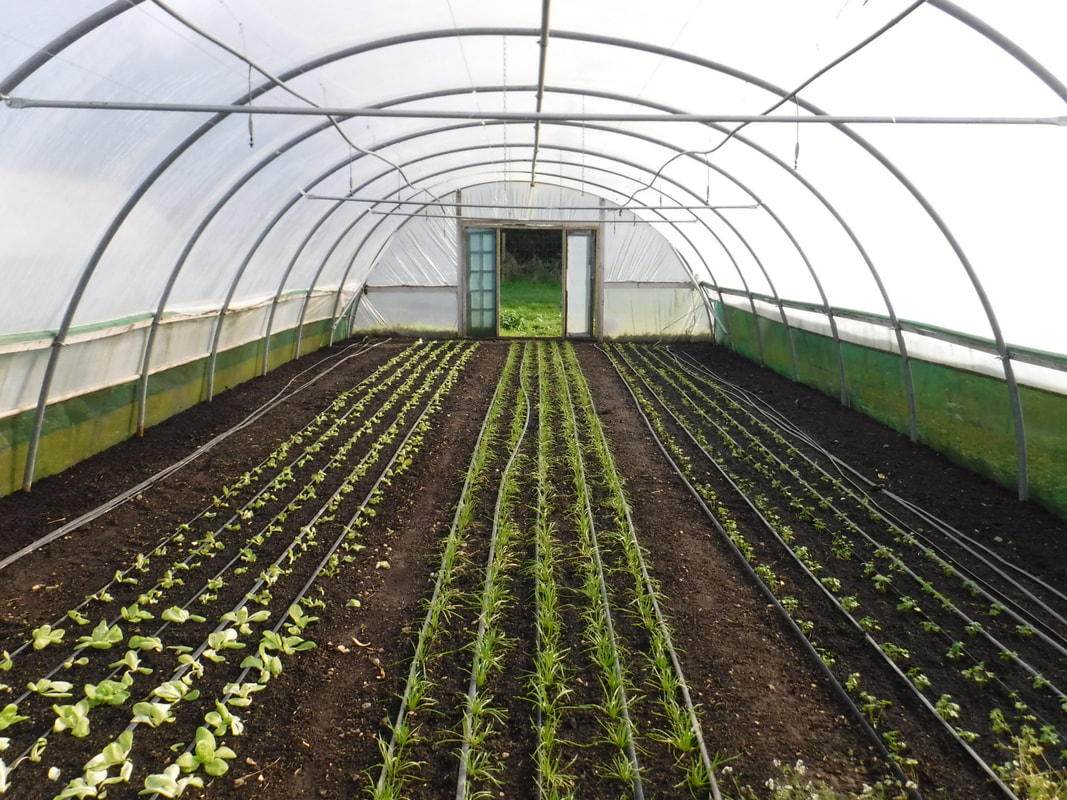|
October marks the beginning of change in the garden, as summer makes way for autumn. The polytunnels are cleared of their summer crops; tomatoes, beans, cucumbers, peppers and chillies being cleared for winter salad leaves, herbs and a few early spring crops such as spring onions, sugarsnap peas and early garlic. Meanwhile, outside the summer crops have also faded with the courgette and french beans plants slumping back into the soil from which they came, the runner beans still just about standing but not producing much, and the squash and sweetcorn all harvested. Preparing the polytunnels for planting our winter/spring crops is usually a case of clearing the old crops by cutting back the plants at ground level, leaving the roots in situ to provide food for the life in the soil and also help with drainage as they leave channels in the soil once they break down. Normally the beds are then soaked thoroughly for a day and then raked. This takes off any lumps of compost that hasn't broken down in the summer and breaks up other lumps of soil to create a fine tilth for planting into and minimises hiding places for slugs and snails. Depending on what crop has been growing there is normally enough fertility from the compost that was spread in the spring, so the beds are not usually mulched again before planting the winter crops. Once planted, the beds are given another thorough soaking from the overhead sprinklers to help the plants get settled in. Then we usually water with drip irrigation to minimise slugs. Outside is dealt with quite differently. It all depends on how wet the ground is in October as to how we manage the soil over winter. Ideally the ground will be dry enough to cultivate lightly before sowing overwintering green manures, usually consisting of cereals such as rye, oats or even wheat and maybe some vetch. This is easily done on beds that have been covered in mypex through the summer and are relatively weed free. Here we can remove the mypex, folding it up neatly and labelling it for next year and let any weeds germinate before hoeing off and direct sowing the green manures in rows about 10-15cm apart to allow inter-row hoeing. The overwintered cereals are very good at holding onto nutrients over winter and reducing soil erosion and leaching caused by the winter weather. Preparing ground for early plantings in the spring usually means covering with silage plastic, held down with sand bags. Again, depending on the preceding crop and how much compost has been applied we may spread some compost before covering with the silage plastic. This protects the soil over winter, minimising leaching of nutrients from the winter rains, but also kills off any crop residues and weeds. Then in the spring, the beds are weed free and almost ready to be planted. The plastic keeps the soil quite dry so that we can cultivate early in the spring if we need to – normally just reforming them with the bedformer.
If other areas are too weedy to create a good seed bed and do not need to be planted early in the spring then we tend to leave them weedy to cover the soil overwinter. Many weeds act as well as any other green manures overwinter – their roots protecting the soil structure and maintaining biological activity in the soil. These beds can then be dealt with later in the spring once it has dried enough to get the tractor on to cultivate. We are slowly moving away from ploughing the garden, and now only bring in the plough to turn in clover green manures that have been growing for a couple of years. This means that only one out of all nine plots of the rotation is being ploughed every year now. We are working towards minimising cultivation as much as possible and will be putting a few no dig beds into our outdoor cropping next year.
48 Comments
|
AuthorAshley has been running Trill Farm Garden since 2010 with his partner Kate. Ellen is the Senior Grower and Seed Coordinator at Trill Farm Garden. Archives
July 2024
Categories |
Proudly powered by Weebly





 RSS Feed
RSS Feed